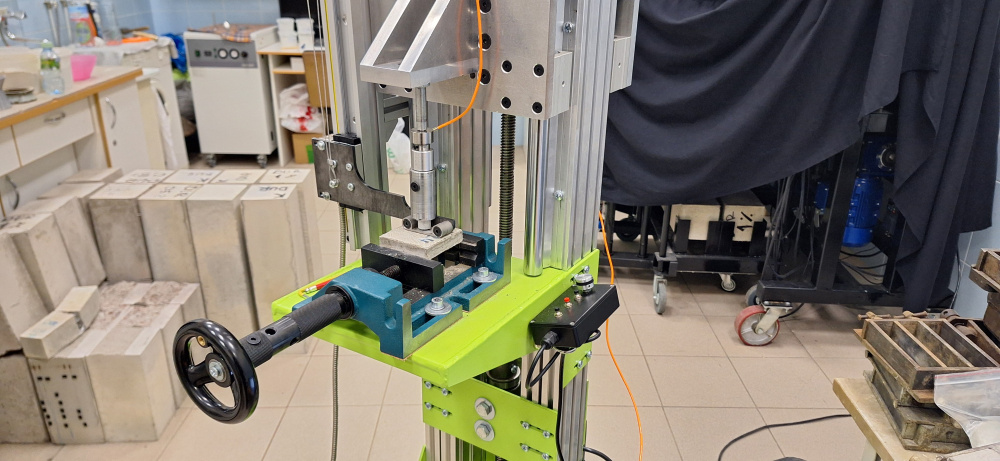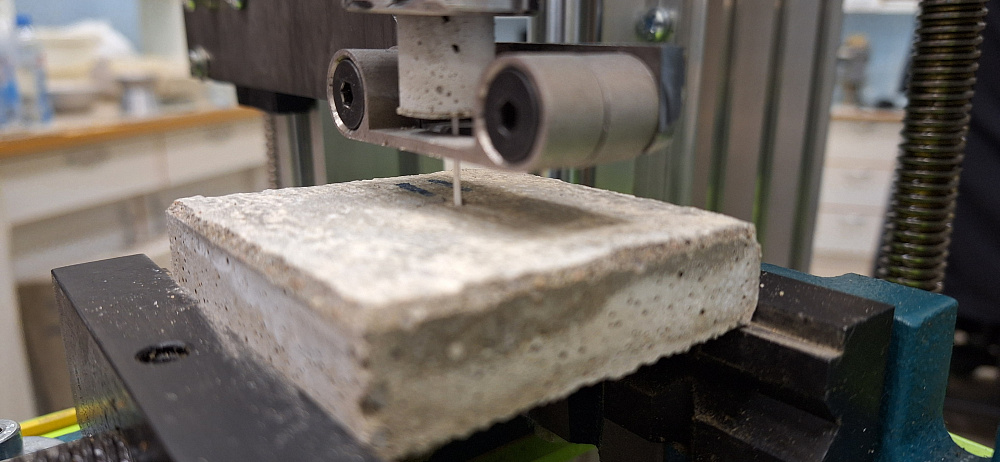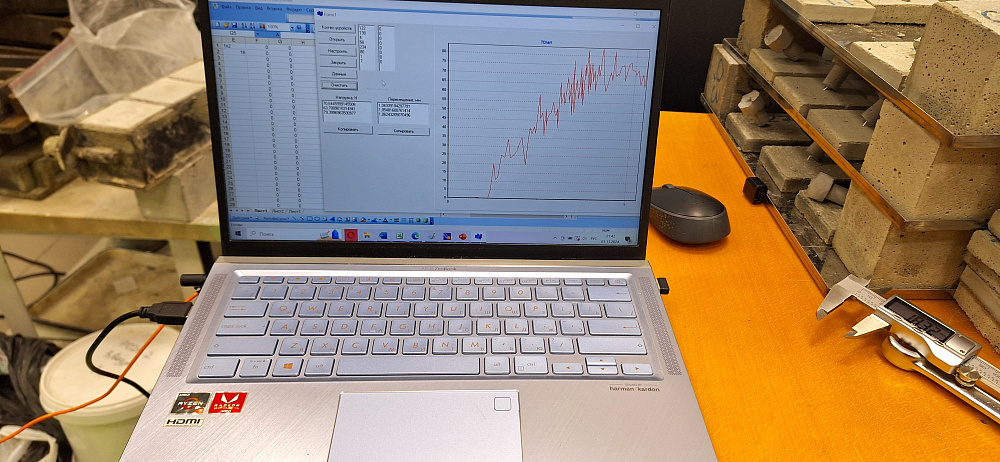 The setup. General view.
The setup. General view.
Mikhail Zhavoronkov, PhD, Associate Professor at the SPbGASU Department of Technology of Construction Materials and Metrology (TCMM), completed the research project "Development and Validation of a Direct Method for Testing the Adhesion Strength of Synthetic Macrofiber to a Matrix" as part of a grant competition for research projects by SPbGASU academic staff in 2025.
Compared to traditional concrete and reinforced concrete, fiber-reinforced concrete boasts higher flexural tensile strength, improved crack resistance, and impact resistance. However, the use of this building material is limited by inadequate testing methods. This problem is complicated by the ever-expanding range of manufactured fibers.
Regulatory documents governing the design methods of fiber-reinforced concrete structures often include the fiber-matrix adhesion strength of fiber-reinforced concrete. In some cases, it is assumed that this characteristic can be determined from a specialized reference book. Unfortunately, such reference books are not comprehensive or multi-purpose.
Specifically for this study, the Department of TCMM developed a setup for determining the fiber-matrix adhesion strength using a direct method. This setup consists of a loading device and a system of sensors that monitor displacements and the applied load. During testing, individual fibers are extracted from concrete specimens, after which diagrams are plotted showing the dependence of fiber displacements on the applied forces. The resulting diagrams are used to calculate the fiber-matrix adhesion strength. Furthermore, the dependence of fiber-matrix adhesion strength on the matrix composition and the depth of embedment was determined.
The results of these tests contribute to the accumulation of statistical and reference data that can be used in the design of fiber-reinforced concrete structures and provide a more complete understanding of the behavior of fiber-reinforced concrete under load. Furthermore, the developed methodology and setup can be used for further studies of the adhesion strength of other fiber matrices and can also be applied in laboratory work in relevant disciplines.



